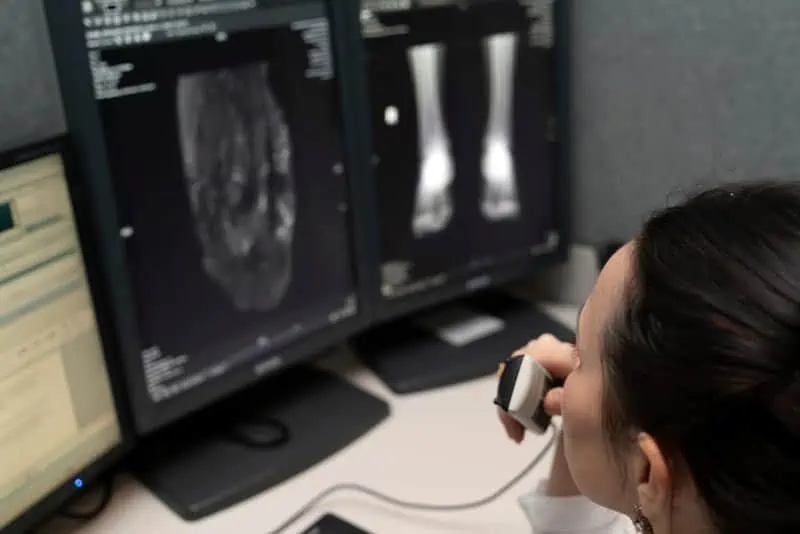Overview – Dictation services for doctors can greatly improve your medical practices in a number of ways. Previously, we’ve discussed in this space:
- The Uses of Dictation Services in Health Care
- How Doctors Can Be More Efficient with Medical Documentation
- How to Save Time and Money with Medical Documentation Services
- Changes in Medical Transcription over the Last 40 Years
- 5 Great Reasons to Work with Medical Transcription Companies

In this post, How to Use Dictation Services for Doctors to Improve Medical Practices, we explore best practices to help improve your dictation skills, reduce transcription costs, and improve the final patient record:
- Follow the Same Format Where Possible
- Enunciate
- Be Concise
- Use Templates
- Ensure Your Equipment is in Good Working Condition
- Don’t Be Afraid to Say “Hi!”
Six Tips for Using Dictation Services for Doctors
1. Follow the Same Format Where Possible
General patient encounters often follow the same pattern: greeting, what’s the problem, discussing some tests, patient education, and plans for follow-up. Following this same format in your dictation as well will make transcription faster and easier for everyone and will cut down on your work during the review phase.
2. Enunciate
One transcriptionist reports that some doctors have more blanks than others because they simply cannot understand what the doctor is saying. This can be several reasons, including:
- Slurring words or not paying attention while speaking
- Speaking away from the microphone or moving around while talking so that the words are garbled
- Speaking too quickly
- Not being clear with often-confused terms such as “fourteen” and “forty” or “adduction” and “abduction”
- Missing information/words
Enunciating words is important to ensure complete and accurate transcriptions. Also, although you don’t have to speak slowly, don’t rush through the words. Spell out words where there may be particular confusion. Make sure you complete your thoughts without jumping around too much.
3. Be Concise

Long, rambling dictation makes for long, rambling patient notes. The fewer words you use, the better – both in terms of time needed for transcription and in terms of what you’ll have to review later.
For example, instead of:
“The patient and I discussed the possibility of further tests down the road should the current course of treatment turn out to be not as effective as we were hoping it would be.”
perhaps:
“We discussed the possibility of further tests pending treatment outcome.”
Also, only record what you want in the transcription. If you get interrupted mid-sentence by the phone or someone coming into the office, stop recording and start again when you return to your dictation.
4. Use Templates
If your dictation service allows templates, your transcriptionist will be able to create macros for common phrases doctors use, such as:
- Common paragraphs in referral letters (such as preambles, sign-offs, etc.)
- What’s included when you say “physical exam”
- Common recommendations told to the patient
- Any general observations, rote set of instructions, or other common messages you tend to use
For example, if you use the same phrasing in a typical referral letter, you can save a ton of time if you refer to the template in three words instead of reciting all 20 words every single time.
5. Ensure Your Equipment is in Good Working Condition
Doctors can always improve the quality of their dictation by ensuring their equipment is in good working order. This means ensuring that you have enough battery power, that you have the right settings for the exam room environment, and that you are using quality equipment to deliver crisp recordings. Technology has advanced to the point where this isn’t as much of a concern as it once was. But still, maximizing the clarity of your recordings will go a long way to ensuring you get back accurate transcription with fewer blanks and flags.
6. Don’t Be Afraid to Say “Hi!”
Feel free to talk directly to your transcriptionist, too. These are your notes, of course, but you don’t have to pretend that nobody else is listening. As with any work situation, a few kind words at the beginning and/or end of the dictation will go a long way with the transcriptionist providing those services for you.
Case Study: How Using Dictation Services for Doctors Improved Patient Encounters for One Physician

Dr. Robert J. Flaherty completely changed his approach to dictation by completing his dictation while the patient was in the room. Although you may think it was for the obvious reasons – to save time after the patient encounter and to ensure he was getting the notes down while they were fresh in his head – there was more to it than that. He found that it actually improved the patient encounter, too.
“My dictation has changed from a documentation procedure to a patient education activity,” Dr. Flaherty said. “As a result, I strive to make my chart notes more organized and less filled with jargon since I want the patient to understand what I am dictating.”
He listed nine other ways dictation improves the patient encounter, including reiterating treatment plans to reinforce with the patient and involving the patient in the thought process. Dr. Flaherty also reports that adding the phrase “dictated in the presence of the patient” to the end of each note helps protects him legally if there are any future disputes.
Lastly, he notes: “Perhaps best of all, when I walk out of the exam room after seeing my last patient for the day, my work is done.”
Although Dr. Flaherty wrote this in 2005, these basic approaches to patient interaction and dictation efficiency hold true today. Read his complete article here: https://www.aafp.org/pubs/fpm/issues/2005/0100/p55.html
Final Thoughts on Dictation Services for Doctors

Dictation services for doctors can be extremely helpful, like any clerical service. They can streamline patient record management, reduce the amount of time a doctor spends on administrative work, and, as outlined above, improve patient encounters.
Of course, choosing the right service matters. iMedat’s medical dictation services provide all of these benefits and more:
- Fast, accurate transcriptions usually delivered within 24 hours
- Templates for faster dictation AND transcription
- Friendly customer service – reach a Quality Assurance Manager during regular office hours, not just a “customer service representative” who can’t help you
- The easy way to take the burden of overwhelming patient record documentation off your plate
Contact iMedat and find out how our dictation services for doctors can improve your patient encounters and reduce your workload. You can also call us directly at 888-779-5888
